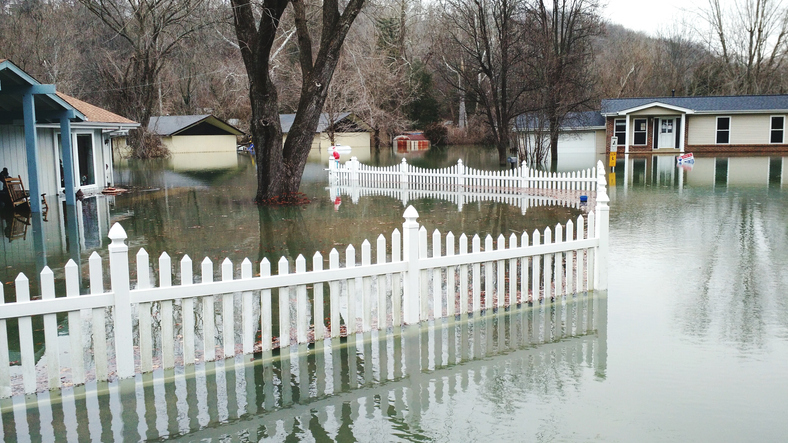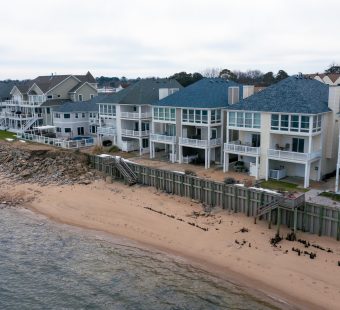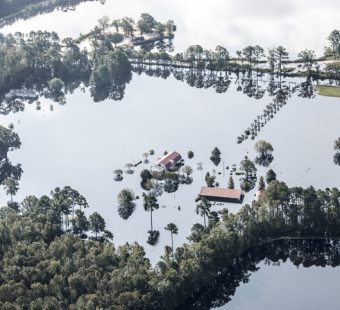
Public-Private Partnerships and Flood Resilience
Jeff Dunsavage, Senior Research Analyst, Triple-I, 04/29/21
Improved access to data, analytical tools, and sophisticated modeling capabilities has turned flood insurance from a virtually untouchable risk for insurers to an area of increasing business opportunity. These developments also have put the pieces in place for powerful collaborations between corporations, governments, and nonprofits to drive flood resilience for communities and businesses.
Stormwater management is one example. Triple-I CEO Sean Kevelighan recently participated in a panel at the P3 Water Summit to discuss flooding and water quality challenges and how insurers, municipalities, rating agencies, and other entities are incorporating flood and climate risks into their businesses.
The view from the middle
“Insurance is in the middle of all of this,” Kevelighan said, referring to three major global crises the moderator had mentioned – biodiversity loss, climate change, and the COVID-19 pandemic – “and I might add geopolitical risk and social unrest, as well as disruption due to technology and innovation. Triple-I is here to inform all those discussions.”
Climate risk, he said, “is certainly on the forefront of all the discussions we’re having right now, in terms of the larger disruption continuum.”
For decades, he noted, the industry has been looking for ways not just to help customers recover from natural catastrophes but to get out in front of the risks and promote methods to make them more resilient.
Flooding is a particularly pressing risk, Kevelighan noted, because “every year you’ve got about a half billion people who are impacted by floods. About 90 percent of all U.S. natural catastrophes involve some form of flooding. This is a critical part of the catastrophe cycle – and one that is significantly underinsured.”
Flood insurance and recovery assistance historically have fallen to federal and state government to manage. But even as improved data and other capabilities have made writing the coverage an increasingly attractive opportunity for insurers, Kevelighan said, it also has become clear that risk transfer through insurance isn’t enough to close the “protection gap.” Public-private partnerships and other approaches are essential.
Bringing it all together
Richard Seline, managing director of Resilient H2O Partners and co-founder of the Resilience Innovation Hub, talked about his companies’ efforts to “introduce emerging technologies, existing equipment, put it together with public and private interests” to promote activities and behaviors supportive of resilience.
“The Innovation Hub is intended to bring together the best ideas, the best experience, the best capital, and network it more efficiently and effectively,” Seline said. “We’re in lots of discussions with engineering firms, architecture firms, a lot of private equity firms. I didn’t know until a year ago that the Nature Conservancy has its own venture fund! Those are the types of folks we’re pulling together.”
Like Kevelighan, Seline pointed to the importance of data in making these collaborations possible: “Unless we have the data available to do the cost-benefit analysis and the return on investment, it’s all theoretical.”
Thanks to partnerships between organizations like Triple-I and Resilient H2O, he said, it’s now possible to marry hydrological data to financial and economic risk models to better inform investment planning and decision making.
Ready to ‘take off’
Stacey Mawson, director at Fitch Ratings, said the environment now seems ripe for stormwater public-private partnerships to “take off.”
“Over the past couple of years we’ve been seeing more projects coming to us for ratings,” she said. These have included water transport, flood mitigation, privatization of utilities because they need additional investment. “We’re seeing an increased focus on water in all its aspects.”
Companies that issue bonds and other forms of debt rely on rating agencies’ assessments of their creditworthiness to keep their borrowing costs low. A bad rating may cause bond buyers to demand a higher interest rate in return for the greater risk such a rating implies.
Rating agencies like Fitch can play a strong role in advancing environmental and social objectives by incorporating climate and social risks into their rating processes. Mawson discussed Fitch’s environmental, social, and governance (ESG) scores and suggested that, over time, if bond-issuing entities aren’t paying sufficient attention to such considerations it could become a rating issue.
For more information and insight on flood risk, check out our new research paper, Flood: Beyond Risk Transfer.



